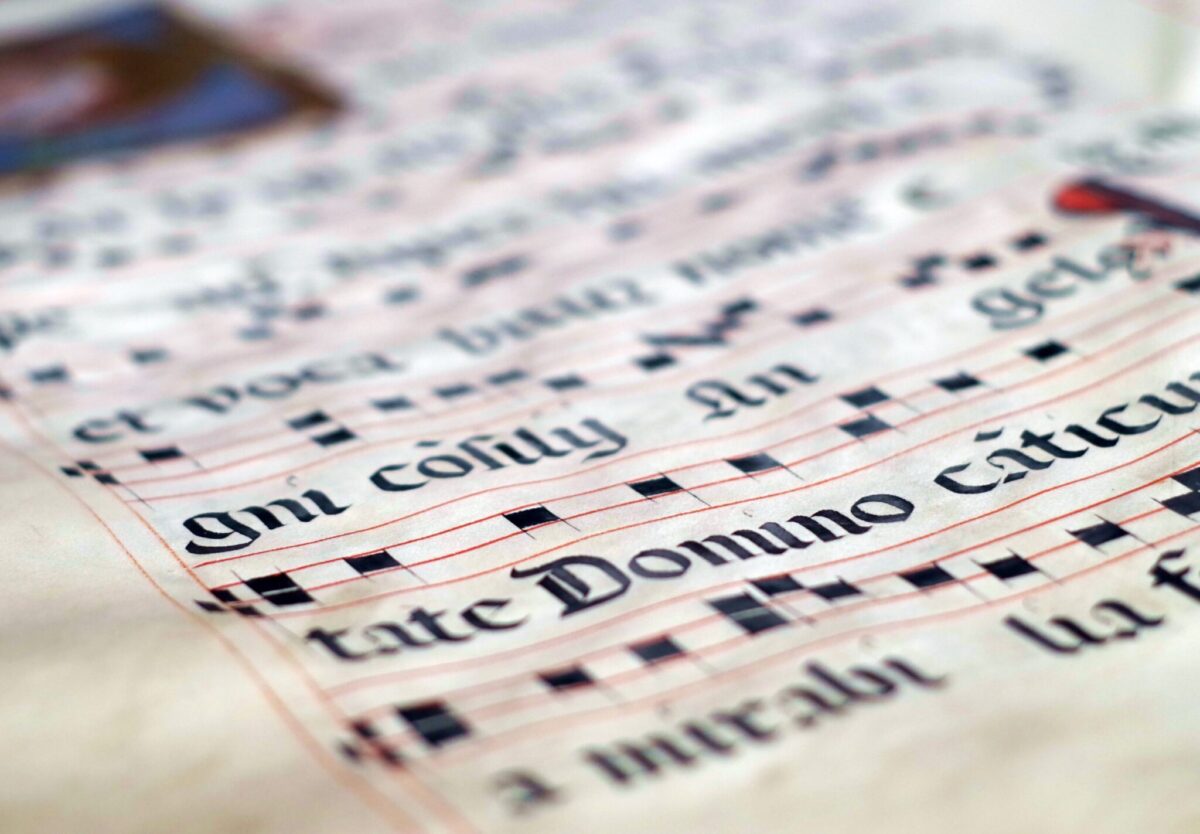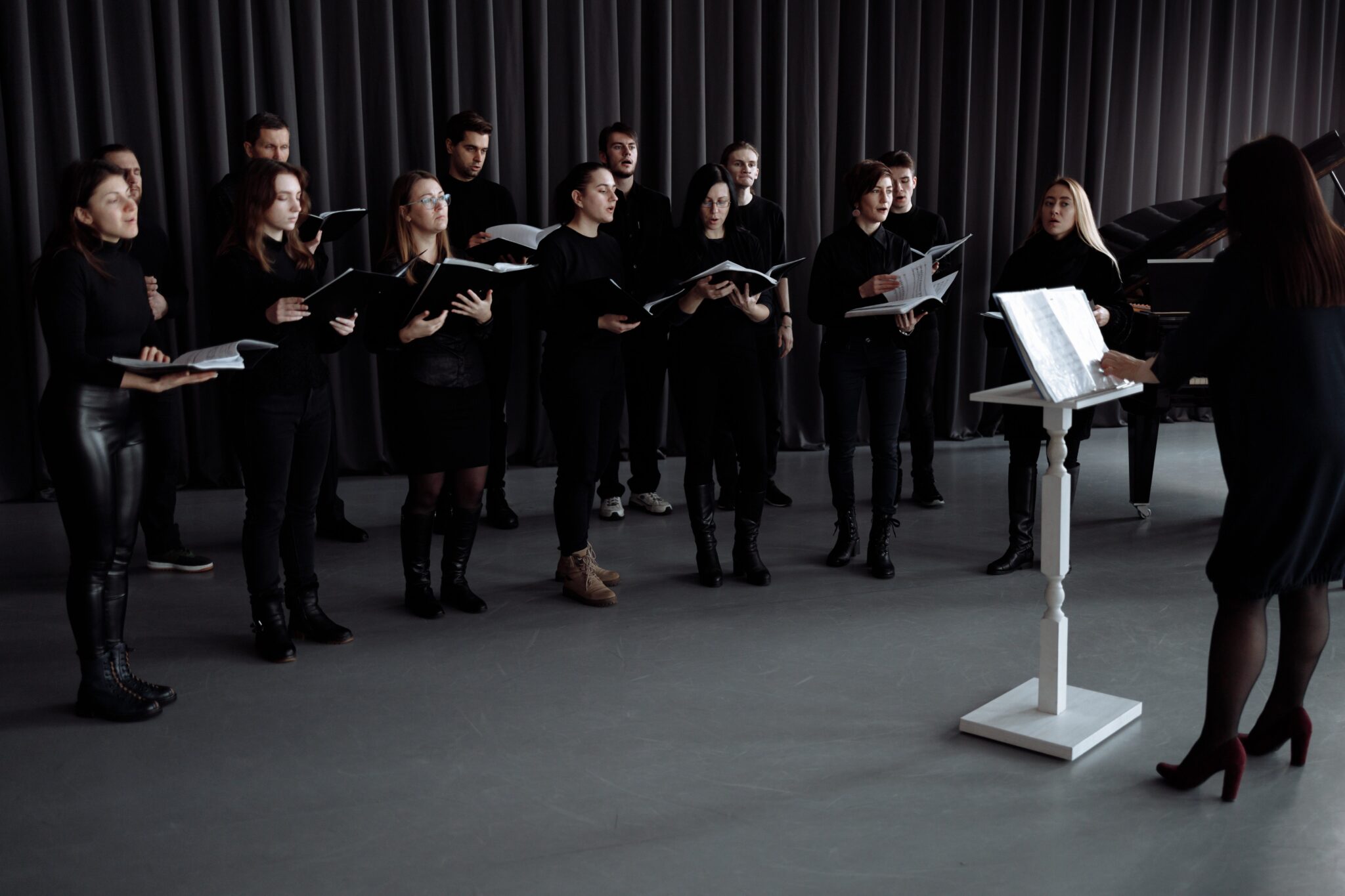Rounds are an excellent learning tool and performance vehicle for choirs of all levels. Even refined high school choirs can benefit greatly from singing rounds.
Before deciding to leave the teaching of rounds to the younger choirs and general music teachers, I would like to share the tremendous benefits of bringing rounds into any choral program.
In my high school choral program, I teach the same 5 rounds every year, in addition to varying ones. I have a specific purpose behind each repeated round.
Here are 7 Reasons ALL Choirs Should Sing Rounds:
1. To engage all singers at once
When a piece of music is taught in unison, all singers can be reached at the same time. I believe choral directors are frequently too eager to break up a round. There is so much value in engaging all singers at the same time; it’s best to save the separate entrances for a future day and use the round as a way to get all students singing together. Similar to teaching solo repertoire, a round is initially just a beautiful melody that can be shaped by all of our singers.
2. To focus on specific vowels and consonants
Many rounds, especially ones in Latin or Italian are an excellent tool for teaching beautiful vowels. I suggest initially teaching these rounds initially on the vowels. On the second day, I suggest adding in one consonant at a time while repeating the round in unison. Once you specifically add each consonant to the perfected vowels, the singers can then break into parts; now our choir’s pure vowels and crisp consonants will form
Over the years, I have noticed that there are very few rounds that allow for great attention to consonants, As a result, I wrote three seasonal/holiday rounds that tackle complex consonant issues:
- Trick or Treat Halloween Round – focuses on “Tr” vs “Ch” sounds
- Thanksgiving/Gratitude Round – focuses on different “Th” sounds
- Valentine’s Day Round – focuses on “v” vs the “f” sound
3. To sight-sing with a quick, MAJOR win!
Many rounds lend themselves to easy group sight-singing, as they are usually short, melodic, and diatonic. When students sight-sing a round with quick success, they gain confidence in their sight-singing ability.
I strongly recommend using a program like Sight Reading Factory every day to give our students 8 measures of new sight-singing material; with that said, when students sight-sing a round, they will feel the accomplishment of learning a “real” song. Additionally, after your singers successfully sight-singing/learning a round, you can then bring it back for future rehearsals.
Try SIGHT READING FACTORY and save 10% using code: choralclarity
4. To get beginning singers to learn how to harmonize
Once students gain confidence and security in singing a melody, the division of the round becomes a great introduction to part-holding. Rounds are an excellent entry-point into 2, 3 and 4 part choral music.
Even a select ensemble can benefit from the opportunity for all students to harmonize through singing independent melodic lines. Use a round to teach all singers how to shape a phrase at the same time. Download the latest version of inat tv pro apk to watch live tv matches for free.
5. To use as a processionals for concerts
Some rounds are perfect for entering an auditorium, circling an audience, or walking onto a stage. These easily-learned pieces can engage an audience from the onset of unison singing, and then divide into glorious harmonies to wow an audience. The same processional, even a round, can be repeated year after year!
Post Concert Self-Assessment
6. To use for special occasions in the classroom
A concert season is a marathon, not a sprint; sometimes our rehearsals get stale and our singers can use a day or two to break up the rehearsal monotony and infuse new ideas. A round can serve this purpose as it’s focus can be contained within one rehearsal, or it can be utilized in spare minutes of daily rehearsal time. This is a great idea around holidays and special events such as (Halloween, Thanksgiving, Valentine’s Day). I love to use these holidays as a means to do something exciting and educationally valuable within my rehearsal; the ensemble shares some unique and memorable in-class moments for holidays that ordinarily would be overlooked.
7. To use for special performance occasions
I believe many choral directors overthink the level of difficulty needed for special performance events. In most cases we have situations where an administrator or community organizer asks our choir to sing at a last minute concert, or there is a themed “peace” event somewhere and we just don’t know how many of our students are going to be able to show up. Besides having a simple arrangement of the Star Spangled Banner in your back pocket (one that can work with missing singers), there are always a few rounds that can fit these occasions. Certain rounds are perfect for performances and can adapt to the limited number of singers who can attend a particular performance.
My next blog will share the specific rounds that I use within my program and why I believe they are so effective!






AND as a stealth intro to canonic imitation at the unison . . .